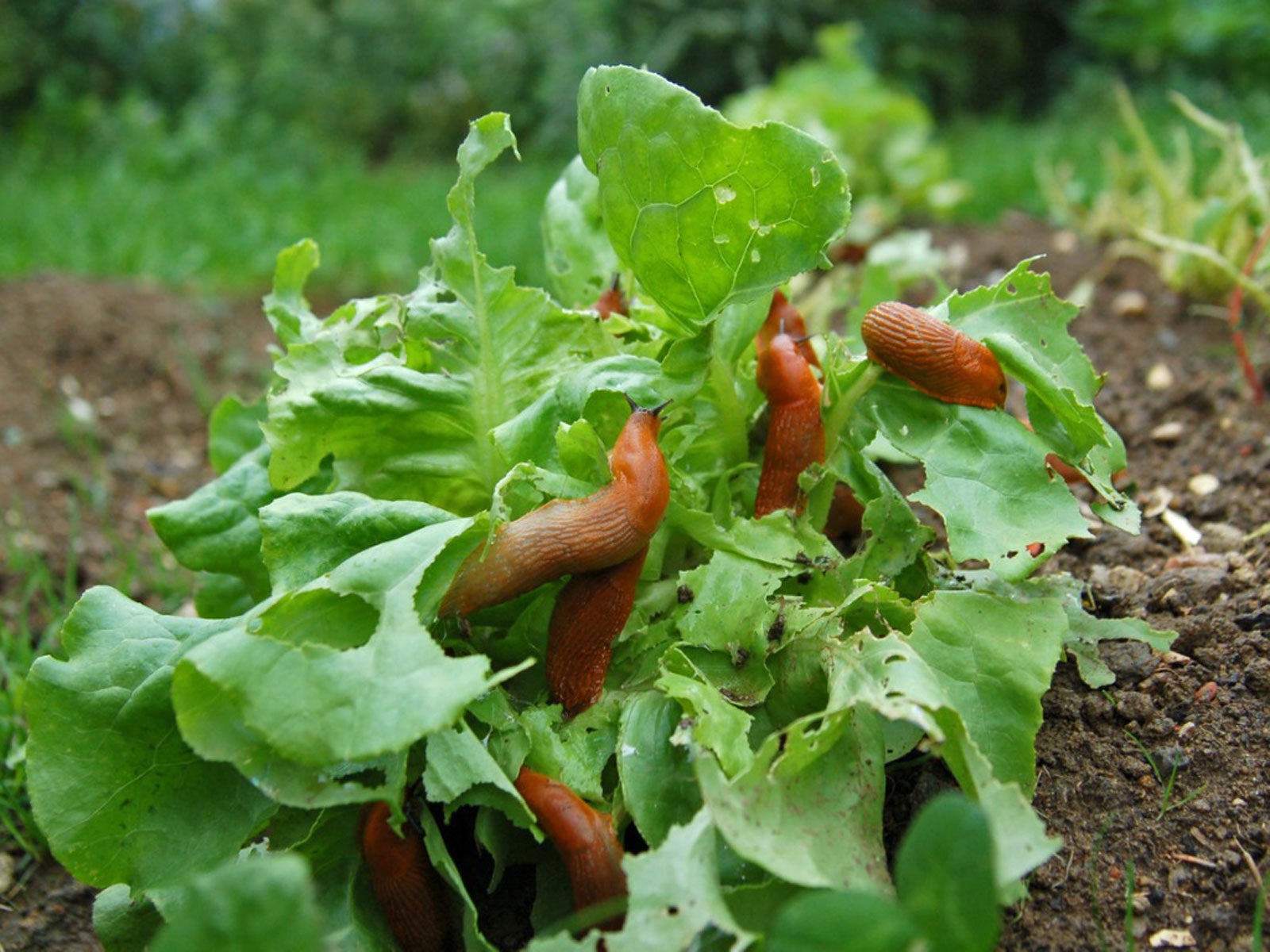Common Lettuce Pests: Lettuce Pest Control Information

Any variety of lettuce is fairly easy to grow; however, most varieties are susceptible to insect pests that attack the lettuce and either kill it off completely or do irreparable damage. Keep reading to learn more about these pests and when lettuce insecticide may be necessary for control.
Common Lettuce Pests
There are a number of pests that attack lettuce plants. Some of the most common lettuce pests are:
- Aphids
- Armyworms
- Corn earworms
- Crickets
- Darkling beetles
- Flea beetles
- Garden symphylans
- Grasshoppers
- Leaf miners
- Nematodes
- Snails and slugs
- Thrips
- Vegetable weevils
- Whiteflies
Depending on your climate and region, you may find any or all of these pests on lettuce plants. As you can see, not only are you lusting after tender greens, but every insect in town has designs on your romaine.
Lettuce Pest Control Tips
Here are a few things to look for and tips on controlling some of the above insect pests of lettuce: Aphids - Aphids pose a quadruple threat. First they suck the water and nutrients from the plant tissue, resulting in the curling of leaves and the demise of young plants. Secondly, they are often parasitized and the dead aphids don't rinse off the leaves. Third, aphids act as virus vectors often assisting in the introduction of diseases like lettuce mosaic. Finally, aphids deposit significant amounts of honeydew on the leaves, which foster the growth of sooty mold. One method for controlling aphids is to introduce or encourage natural predators such as lady beetles, lacewings, damsel bugs, flower fly maggots, parasitic wasps, and birds. Horticultural soap or neem oil may also be used to control the aphid population. There are no systemic insecticides to control aphids. Caterpillars - The most damaging group of insect pests that attack lettuce are those in the family Lepidoptera (caterpillars), which include many varieties of cutworm, armyworm, corn earworm and cabbage looper. Each type has a different feeding habit with different life cycles foraging on different areas of lettuce, but the result is the same: holey, mangled foliage - even eaten in its entirety. Some Lepidoptera have natural predators which can be encouraged; otherwise, finding an effective insecticide may be the answer. Thrips - Thrips may affect the entire lettuce plant in all its stages of growth and end up causing leaf malformation. They are also vectors for some lettuce diseases. Leaf miners - Leaf miners insert eggs in the upper leaf surface, which in turn become maggots. Use of the insecticide spinosad in commercial farming has seen a reduction in infestation, although with all things, some evidence now points to their resistance to it. Beetles - Beetle varieties are soil infecting insects for the most part; their larvae hatch in the soil and often feed on the roots of the lettuce plants. Slugs and snails - Slugs and snails adore the tender, young green lettuce and can voraciously erase any hint of seedlings almost as soon as they are planted. They hide during the daytime hours among weeds, plant debris, stones, boards, ground cover and anything close to the ground. Hence, it's important to maintain a clean area surrounding the lettuce shoots to deter them. Also, utilize drip irrigation to reduce the humidity and moist areas where these critters congregate. Some types of plants such as nasturtiums, begonias, fuchsias, geraniums, lavender, rosemary and sage are avoided by slugs and snails, so including these plants among or near lettuce rows should help. Traps, organic bait and barrier placement are all useful tools in the removal of snails and slugs. Water the area slightly to encourage the slugs and snails to come out and bait in the afternoon or early evening. If you are not squeamish, a successful method of removal is to hand pluck the insects from habitable areas two hours after dark with the aid of a flashlight.
Lettuce Insecticides or Chemical Control
If cultural controls such as use of mulch or removal of debris and vegetation, and biological controls like natural predation, aren't handling the lettuce pest problem, you may need to resort to chemical controls. Azadirachtin, which is a natural compound derived from the neem tree, is effective against caterpillars and aphids. Bacillus thuringiensis is a natural soil bacterium, which can aid in the eradication of caterpillars. Spinosad is used to control the Lepidopteran larvae and leaf miners. Its use over years; however, has resulted in resistance in some insects species. Compounds containing Methoxyfenozide are also used to control infestation of caterpillars.
Gardening tips, videos, info and more delivered right to your inbox!
Sign up for the Gardening Know How newsletter today and receive a free copy of our e-book "How to Grow Delicious Tomatoes".

Amy Grant has been gardening for 30 years and writing for 15. A professional chef and caterer, Amy's area of expertise is culinary gardening.
-
 Zinnias On Repeat: 10 Glorious Cut-And-Come-Again Varieties For Endless Summer Bouquets
Zinnias On Repeat: 10 Glorious Cut-And-Come-Again Varieties For Endless Summer BouquetsThese zinnia varieties keep giving all summer, making them the perfect choice for dedicated cutting gardens – or just the occasional homegrown bouquet.
By Ellen Wells
-
 Create A Romantic Garden Straight Out Of Bridgerton: Regency Era Romance In Your Garden
Create A Romantic Garden Straight Out Of Bridgerton: Regency Era Romance In Your GardenTry some romantic garden ideas straight out of Bridgerton. Flowers and gardens in the Regency era were lush and charming and you can get the same look!
By Bonnie L. Grant